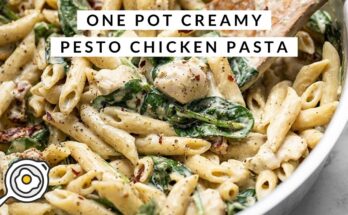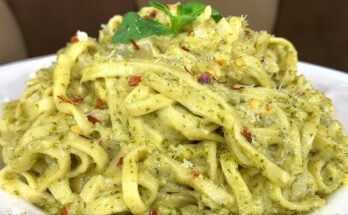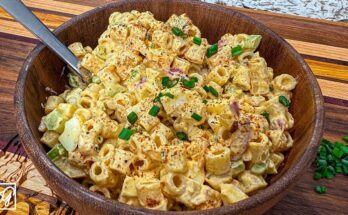Duck Confit Recipe: If you’ve ever sat down in a cozy French bistro and indulged in duck confit, you already know it’s not just another dish—it’s an experience. Duck confit (pronounced “kon-FEE”) is a centuries-old French method of preserving and cooking duck in its own fat. The result? A deeply savory, melt-in-your-mouth meat that boasts a crispy skin and luxurious flavor.
This dish might sound fancy, but don’t let that intimidate you. With the right guidance, making duck confit at home is not only possible—it’s incredibly satisfying. Whether you’re looking to impress at a dinner party or elevate your Sunday supper, duck confit is your ticket to gourmet greatness.
What makes it so special? It’s all about patience and precision. The slow-cooking process infuses the duck with flavor, while preserving it in its own fat creates a tender texture that’s hard to beat. Plus, once cooked, it stores beautifully for weeks, making it perfect for prepping ahead of time.
Ingredients Needed for Duck Confit
Let’s talk ingredients. Duck confit doesn’t require a long grocery list, but what you use matters—especially when it comes to the duck and the fat.
Main Ingredients:
- 4 duck legs (with thighs attached)
- 4 tablespoons kosher salt
- 1 tablespoon black peppercorns (crushed)
- 4 cloves garlic (smashed)
- 4 sprigs fresh thyme
- 2 bay leaves (crumbled)
- 2-3 cups duck fat (or enough to fully submerge the legs)
Optional Flavor Enhancers:
- A few sprigs of rosemary or sage
- Orange zest for a citrus twist
- Juniper berries or allspice for deeper aromatics
The duck legs are the star of the show, so opt for good quality. Duck fat is essential—not only for cooking but for preserving and flavor. If you can’t find duck fat locally, many online stores carry it.
Preparing the Duck for Confit
Before the duck hits the pan, it needs a little TLC. This is where the curing process comes in. Curing adds flavor, draws out moisture, and starts the tenderizing magic.
Step 1: Clean and Trim
Rinse the duck legs under cold water and pat them dry. Trim excess fat (but don’t throw it away—you can render it and use it later). Score the skin lightly with a sharp knife to help the fat render out during cooking.
Step 2: Cure the Duck
Place the duck legs in a shallow dish or baking tray. Rub the kosher salt evenly all over. Sprinkle with crushed peppercorns, smashed garlic, and your chosen herbs. Make sure every nook is seasoned.
Cover the dish with plastic wrap and refrigerate for at least 24 hours (up to 48 for deeper flavor). This step is crucial—so don’t rush it!
Step 3: Rinse and Dry
After curing, remove the duck from the fridge, rinse off the excess salt and seasoning under cold water, and pat dry thoroughly. Let the duck come to room temperature before cooking to ensure even cooking.
Step-by-Step Cooking Instructions
Now comes the heart of duck confit—the slow cooking. This method transforms tough duck meat into something buttery and tender.
Step 1: Melt the Duck Fat
In a heavy-bottomed Dutch oven or deep ovenproof skillet, slowly melt the duck fat over low heat. Don’t let it boil—just warm it enough to become liquid.
Step 2: Submerge and Cook
Place the duck legs skin-side down into the fat. They should be fully submerged. If needed, add more fat or even a bit of neutral oil to cover.
Preheat your oven to 225°F (about 107°C). Once the fat is warm and the duck is submerged, transfer the pot to the oven. Let it cook slowly for 2.5 to 3 hours. The meat should be tender when pierced with a fork, nearly falling off the bone.
Step 3: Crisp the Skin (Optional but Delicious)
When you’re ready to serve, remove the duck legs from the fat and place them skin-side down in a hot skillet. Cook for a few minutes until the skin is golden and crispy. This final sear brings a beautiful texture contrast to the rich meat.
Storing and Serving Duck Confit
The beauty of duck confit is its shelf-life. Once cooked, it can be stored for weeks—making it perfect for meal planning or entertaining.
How to Store:
Let the duck legs cool in the fat. Transfer to an airtight container, ensuring the legs are fully covered by fat. Refrigerate for up to a month. For longer storage, vacuum seal and freeze for up to 3 months.
How to Reheat:
To reheat, gently warm the duck legs in the fat over low heat until heated through. Then crisp up the skin in a pan or under a broiler.
Serving Ideas:
- Pair with roasted potatoes or a creamy gratin
- Serve atop a bed of lentils or mixed greens
- Add to a rustic cassoulet or pasta
Duck confit isn’t just a dish—it’s a culinary adventure. And now, you’re fully equipped to make it your own.
Choosing the Right Duck for Confit
Not all duck legs are created equal, and choosing the right kind of duck makes a noticeable difference in both flavor and texture. Ideally, you want legs from a Muscovy or Moulard duck, both known for their meaty legs and rich flavor. However, Pekin duck, the more commonly available breed in North America, will also do the job quite well.
Fresh vs. Frozen
Fresh duck legs are always preferred because they tend to have better texture, but frozen can work just fine as long as they’re thawed properly. Always thaw in the refrigerator over 24 hours to retain moisture and prevent bacteria growth.
Organic and Free-Range Benefits
Going for organic or free-range duck often means the birds were fed better and allowed to grow naturally, resulting in deeper flavor. It’s worth spending a few extra bucks here since this dish is all about savoring richness.
Flavor Enhancers and Customizations
Duck confit is incredibly versatile when it comes to flavor infusions. The basic cure (salt, pepper, garlic, thyme) is timeless, but don’t be afraid to give it a twist to match your own taste or impress guests.
Spices and Herbs to Try:
- Cinnamon sticks and star anise: For a subtle, sweet-spicy warmth
- Crushed juniper berries: Adds a foresty, resinous note
- Lemon or orange zest: Offers bright acidity to cut through the richness
- Fresh bay leaves and rosemary: Traditional and aromatic
When customizing, remember that less is more. You don’t want to overpower the natural richness of duck with too many bold flavors. The goal is balance.
Alcohol Marinades?
Some cooks marinate duck in a splash of cognac, red wine, or Armagnac before curing for added depth. It’s optional, but worth trying once.
The Science Behind Duck Confit
What makes duck confit so unique isn’t just the flavor—it’s the technique. At its core, confit is a form of preservation. Before refrigeration, it was a go-to method for French farmers to keep meats edible for weeks, sometimes months.
Low and Slow Cooking Magic
The duck is submerged in fat and cooked at low temperatures over several hours. This low-and-slow method ensures the muscle fibers break down gently, resulting in meat that is unbelievably tender.
Unlike frying, where high heat cooks the exterior quickly, confit slowly tenderizes the meat throughout. The fat acts as a protective barrier, keeping out bacteria and oxygen.
Fat as a Preserver
Once the duck is cooked and cooled in its fat, the layer of solidified fat acts like a seal, keeping the meat moist and fresh. That’s why it can last for weeks in the fridge when stored properly.
Common Mistakes to Avoid
Even though the process is relatively simple, a few missteps can throw off the final result. Here are some things to keep in mind:
1. Skipping the Cure
Don’t skip or shorten the curing process. This step is essential to flavor and texture. If you rush it, you’ll miss out on the deep seasoning that sets duck confit apart.
2. Not Drying the Duck Properly
Before you cook, the duck legs need to be completely dry. Moisture can cause the fat to splatter and interfere with even cooking.
3. Using the Wrong Fat
Always use duck fat if possible. It has a mild, clean flavor that complements the duck perfectly. Substitutes like chicken fat or vegetable oil won’t give the same results.
4. Overheating the Fat
Keep the temperature steady and low. If the fat gets too hot, you risk frying the duck instead of gently confiting it. Use an oven thermometer if needed.
5. Improper Storage
Once cooled, the duck must be fully submerged in fat to preserve properly. Exposed meat can dry out or spoil.
Pairing Duck Confit with Sides and Wine
Duck confit is rich and savory, which means it pairs beautifully with dishes that offer contrast—like acidity, crunch, or lightness.
Classic Side Dishes:
- Crispy roasted potatoes or pommes sarladaises: Cooked in duck fat, of course
- Braised lentils: Earthy and protein-rich, they’re a French favorite
- Sauteed greens: Kale, spinach, or Swiss chard help cut through the fat
- Root vegetables: Carrots, parsnips, and beets roast up sweet and earthy
Best Wine Pairings:
- Pinot Noir: Its acidity and red fruit notes complement the richness
- Syrah/Shiraz: Offers spice and body without overwhelming the dish
- Chardonnay (oaked): If you prefer white, go for a creamy, buttery version
Duck confit is a star on the plate, so choose accompaniments that enhance rather than compete with it.
Making Duck Confit Ahead of Time
One of the best things about duck confit is how well it fits into meal planning. You can make it days—or even weeks—in advance and still serve it as if it were freshly cooked. In fact, the flavor often improves after resting in the fat for a few days.
How Far in Advance Can You Make It?
Duck confit can be made up to one month ahead, provided it’s stored properly in its fat in an airtight container in the refrigerator. This gives you flexibility if you’re hosting a dinner party or simply want to prep ahead for an elegant weeknight dinner.
Reheating Without Drying Out
The best way to reheat duck confit is low and slow. Pull the duck legs out of the fat and place them in a skillet skin-side down. Let them crisp on medium heat until the skin is golden, then flip and heat through for a few more minutes. You can also warm them gently in an oven at 300°F (150°C) until hot throughout.
Avoid microwaving duck confit—it ruins the texture and makes the skin rubbery.
Duck Confit vs. Other Duck Dishes
You might be wondering how duck confit compares to other duck preparations, like roast duck, Peking duck, or even duck à l’orange. While each has its charm, duck confit stands apart due to its method and texture.
What Sets Duck Confit Apart?
- Preservation technique: Confit is slow-cooked and stored in its own fat.
- Texture: Incredibly tender meat with minimal effort.
- Flavor depth: The curing and cooking process builds layers of rich, savory notes.
Duck Confit vs. Roasted Duck
Roasted duck usually focuses on crisp skin and juicy meat but can easily dry out if not monitored. Confit, on the other hand, almost guarantees perfect texture every time thanks to the gentle fat bath.
Duck Confit vs. Peking Duck
Peking duck is prized for its lacquered skin and theatrical tableside carving. It’s complex and time-consuming to make at home. Confit offers gourmet satisfaction with much less fuss and is easier for the home cook to master.
Using Leftover Duck Confit
Got leftovers? Don’t waste a morsel! Duck confit is incredibly versatile and can add a gourmet twist to even the simplest meals.
Delicious Leftover Ideas:
- Duck Confit Hash – Shred the meat and sauté it with potatoes, onions, and bell peppers for an elevated breakfast.
- Duck Tacos – Pair with pickled red onions and a citrusy slaw in soft corn tortillas.
- Duck Rillette – Shred the meat and mix it with some of the rendered fat to make a spreadable pâté—serve with crusty bread.
- Duck Pasta – Toss with pappardelle, mushrooms, and a splash of cream for a rustic pasta dish.
- Duck Salad – Crisp the meat and top it over arugula with goat cheese and balsamic vinaigrette.
The key to repurposing duck confit is balancing its richness with freshness, acid, or spice.
Health Considerations and Nutritional Info
Duck confit, while undeniably rich, can still have a place in a balanced diet when enjoyed in moderation. Knowing what you’re eating helps you appreciate it even more.
Nutritional Breakdown (Per Serving):
- Calories: ~400–600 (depending on portion size and amount of fat)
- Protein: 25–30g
- Fat: 35–45g (mostly from duck fat)
- Carbs: 0g
Duck fat is high in monounsaturated fats, similar to olive oil. It’s not exactly “diet food,” but it’s far from unhealthy when eaten in reasonable portions. Pair it with fiber-rich sides like greens or lentils to round out the meal.
FAQs about Duck Confit Recipe
1. Can I use chicken instead of duck for confit?
Yes! Chicken thighs and legs can be used in a similar fashion. The flavor will be different but still delicious.
2. Where can I buy duck fat?
You can find duck fat at gourmet grocery stores, butcher shops, or online retailers. You can also render it from leftover duck skin and fat.
3. Can I make duck confit without an oven?
Yes, you can cook it entirely on the stovetop as long as the heat stays low and consistent, but oven cooking offers better heat control.
4. How do I know when the duck is fully cooked?
The meat should be tender and pull away easily from the bone. It usually takes 2.5 to 3 hours at 225°F.
5. What should I do with leftover duck fat?
Don’t toss it! Use it to roast vegetables, fry potatoes, or cook eggs. It adds rich, savory flavor to just about anything.
Conclusion
Making duck confit at home might sound like a task reserved for gourmet chefs, but it’s surprisingly manageable. With a little patience and the right technique, you can enjoy restaurant-quality duck that’s juicy, tender, and bursting with flavor.
It’s the kind of recipe that invites you to slow down, savor the process, and enjoy the rewards. Whether you’re impressing guests or treating yourself, duck confit is a culinary gem worth mastering.



